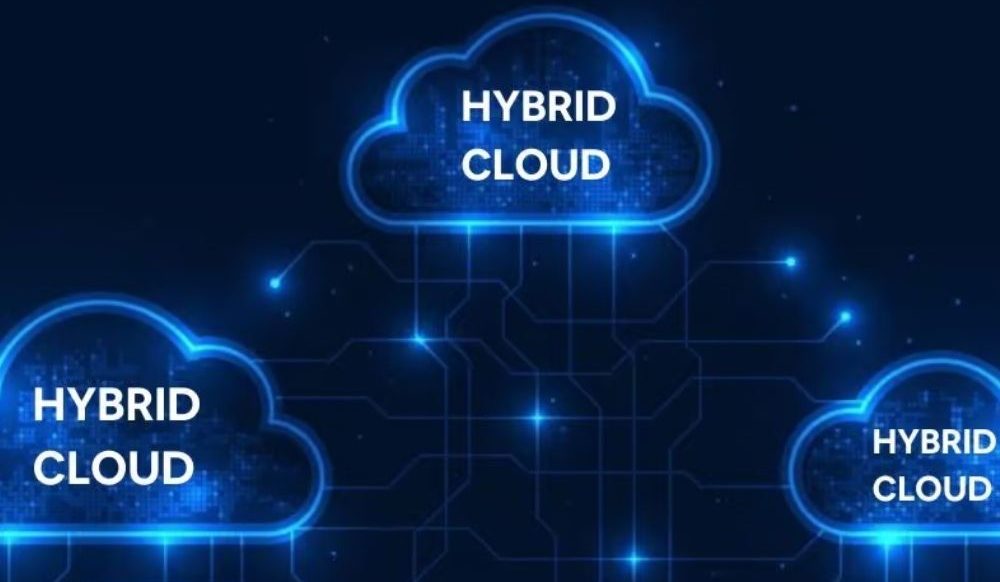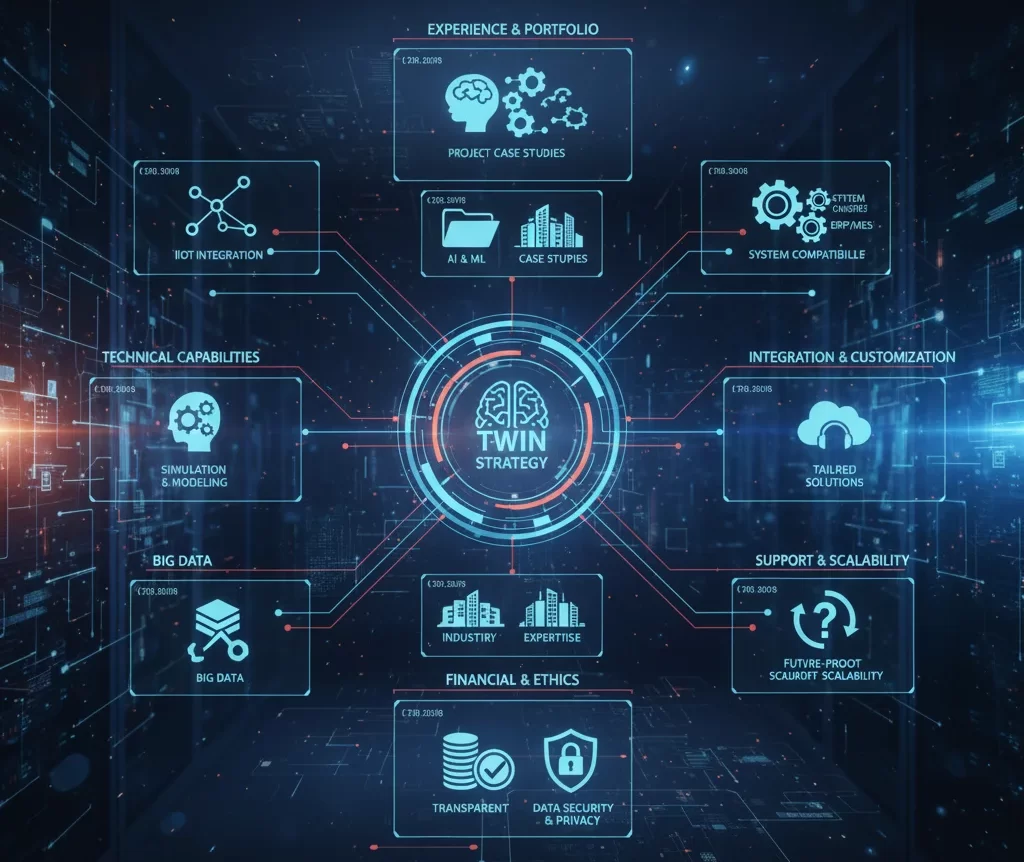Digital twins are seen as digital replicas of objects and systems found in the real world nowadays. They might provide a lot of information on how something would perform in the actual world.
The development of science and technology in the era of technology 4.0 has created fluctuations in many fields. One of the important technologies contributing to the creation of the modern picture is Digital Twins. The following article of BAP IT will help you have more information about it!
1. What are Digital Twins? How does it works?

The first steps in the technology revolution with Digital Twins (Source: Tino Group JSC)
Though the concept of digital twins first emerged in the early 2000s, IT professionals have been using the technology for a significant length of time and have been growingly fond of it. Digital twins are among the most futuristic and hotly debated new technologies of the last several years.
Digital twins are seen as digital replicas of objects and systems found in the real world nowadays. They might provide a lot of information on how something would perform in the actual world. Using simulation and real-time data, Digital Twin technology tracks a product or system during its lifetime. From there, it will also be more accurate to support engineers in forming opinions on the actual systems it portrays.
How do Digital Twins operate?
The life cycle of a Digital Twin begins with data science experts studying the physics and operational data of a physical system to develop a mathematical model that simulates the original reality.
The designers of this Digital Twins technology hope that virtual computer models will get input from sensors compiling data from the actual version. This allows the digital form to real-time duplicate what is happening with the original. This allows one to get comprehensive performance statistics along with any feasible problems.
2. Advantages and disadvantages of Digital Twins

You should consider the benefits and limitations of Digital Twins overall (Source: Vina Aspire)
Advantages of Digital Twins
- Forward thinking technology
Digital Twins are an advanced technology that has the potential to create high-speed changes in the future. It provides valuable insight into operations in their current state, but it truly advances engineering practice when used to predict future scenarios.
- Development quicker
Digital Twins expedite testing and development processes in addition to enabling rapid modification. Engineers may use the information gained from creating and filing Digital Twins to save time and effort when starting new projects. Having a library of reference models available can be very time-saving.
- Encoding tacit knowledge
With the use of Digital Twin technology, knowledge that is often lost might be stored in a more thorough manner. Each year, a significant amount of valuable information is lost when people retire and stop working.
A thorough approach to obtaining data and insights from previous projects may be to fully model all of the system interactions used in the Digital Twins architecture. Engineers will have the chance to save important data in digital twins for subsequent tracking, tracing and reference.
Disadvantages of Digital Twins
- Digital Infrastructure
The necessary digital infrastructure is one of the primary challenges facing the Digital Twins. The Digital Twins technology requires a model-based environment in order to function. A business must create a digital environment if it does not already have one.
It might be difficult to create the ideal environment. The majority of businesses use different software and technologies that aren’t meant to be fully compatible. Setting up the right connections is possible, but it takes effort and money.
- Maintenance
Once a Digital Twin is formed, it must be maintained. Throughout their existence, physical items will differ from their Digital Twins owing to numerous reasons like operational circumstances, age, wear and tear, etc. In certain circumstances if Digital Twins are not maintained and do not catch changes happening in the physical version, it will not be an accurate depiction of the actual item.
Digital Twins are challenging to maintain. Many efforts to adopt Digital Twins fail because digital assets do not receive the same level of attention and maintenance as physical assets.
3. How does Digital Twin technology support the healthcare, manufacturing and smart cities industries?

How are different industries benefiting from Digital Twins? (Source: Tạp chí tự động hóa)
- Manufacturing:
Digital Twins can make manufacturing more efficient and streamlined while reducing processing times.
- Example:
In the automotive industry, a Digital Twin of a production line can predict and prevent equipment failures, optimize maintenance, and ensure the highest quality products. By simulating the manufacturing process before it actually happens, companies can detect and fix potential problems, reducing the time and costs associated with manufacturing.
- Healthcare:
The healthcare industry is benefiting from Digital Twins in treatments such as organ donation, surgical training, and minimizing surgical risks.
- Example:
Great Ormond Street Hospital (UK) used Digital Twins to simulate the heart of a child patient. Before surgery, doctors can test different interventions on the virtual model, helping them better prepare and increasing the chance of a successful surgery. This is especially useful in complex situations where every step needs to be carefully considered.
- Smart Cities:
Digital Twins can also be used to help cities become more economically, environmentally and socially sustainable. Relying on virtual models can support planning decisions and provide solutions to complex problems faced by modern cities.
Example:
In Singapore, the government has used Digital Twins to simulate and manage infrastructure, transportation and the environment. For example, the system helps predict and reduce traffic congestion by simulating different traffic scenarios and then providing appropriate traffic control measures.
4. The role of AI, Big Data and IoT in enhancing the capabilities of Digital Twins

What role does modern technology play in improving the effectiveness of Digital Twins? (Source: CMC Consulting)
AI enhances the efficiency of Digital Twins
- Analytics and Predictions:
AI plays a vital role in processing large amounts of data from Digital Twins as it helps to detect hidden patterns and trends. This, in turn, provides insight into the performance and health of physical systems. At the same time, AI has the ability to predict possible future problems, support proactive maintenance, and minimize unwanted downtime.
- Operations Optimization:
AI uses information from Digital Twins to improve processes and operations, leading to increased overall efficiency and effectiveness. Additionally, AI can automate decision-making processes based on real-world data, helping to reduce human intervention and speed up response in emergency situations.
Big Data Impacts Digital Twins
- Data Collection and Storage:
Big Data opens up the possibility of collecting and storing huge amounts of data from various sources, such as IoT sensors, management systems, and external sources. Big data storage systems can process and preserve enormous amounts of data, ensuring that Digital Twins models always have all the information they need to operate efficiently and accurately.
- Complex Data Analysis:
Big Data provides powerful tools for processing and analyzing complex data sets, thereby improving the accuracy and performance of Digital Twins models. Furthermore, integrating data from many different sources thanks to Big Data allows for a deeper and more comprehensive view of physical systems, helping to make smarter decisions.
IoT Optimizes Digital Twins
- Real-time Data Collection:
IoT has the potential to provide a network of sensors and devices that collect real-time data from physical systems. This ensures that the Digital Twins models always accurately reflect the current state of the system. Thanks to its constant connectivity, IoT ensures that data flows smoothly and without interruption, helping to maintain up-to-date and accurate information for Digital Twins.
- Remote monitoring and control:
IoT will enable continuous monitoring of physical systems and provide instant data to Digital Twins, making monitoring easier than ever. Furthermore, with remote control capabilities based on information from Digital Twins, IoT enhances management and operations capabilities, facilitating flexible and effective system adjustments.
5. The future of Digital Twins

A picture of the future that develops with the presence of Digital Twins technology (Source: Intellias)
Integrated digital twins, a technology that offers both digital and physical viewpoints of a broad range of complex processes, facilities, and equipment, are transforming the landscape of asset-intensive enterprises. Because they may continuously learn new skills, digital twins can quickly provide industrial companies with insights that might aid in the development of more efficient products and procedures.
Businesses and organizations are already using the Internet of Things (IoT), and Digital Twins are seen to be the next step in their digital transformation. They help you increase productivity, streamline processes, spot any problems before they happen, and come up with creative solutions for the future. You should think about the idea of digital twin solutions if your organization wants to improve employee outcomes in addition to business operations results.
6. Conclusion
Hopefully, the information provided by BAP IT will help readers and businesses understand Digital Twins technology and its practical applications. Applying Digital Twins to business operations is not simple, it requires businesses to have clear processes, deep understanding and adequate infrastructure. Therefore, before implementing Digital Twins, businesses should consider whether the infrastructure factors have met the requirements well or not.
BAP IT has a lot of experience in Enterprise Digital Transformation. In addition, BAP IT also provides consulting and implementation solutions for IoT, SAP, ERP technology. If your business is interested, please contact BAP IT immediately for advice and support.












